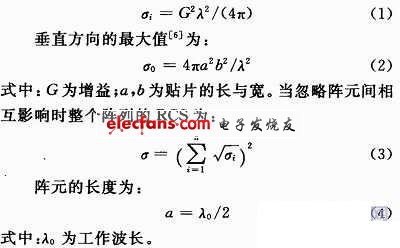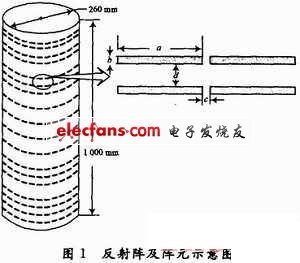0 Preface
Due to its high performance and flexibility, reflective arrays are becoming more and more widely used in communications, military and other fields. For example, base station communications, vehicle radar, and changes in the scattering field of target objects require different operating frequencies, bandwidths, RCS, and sizes. Reflective array, then how to design an array that meets the requirements accurately, efficiently and at low cost will surely become an urgent problem to be solved. At present, the widely used design method of reflective arrays is through certain theoretical modeling, and according to the empirical formula, the relevant size modification is carried out, and finally satisfactory results are obtained. In this paper, the basic design method of the array, combined with FEKO software simulation and optimization, not only has a standardized design process, but also overcomes the shortcomings of low theoretical analysis accuracy, and shortens the design cycle, reduces design costs, and enhances design flexibility.
The reflection characteristics of the array depend on the number of elements, the position of the elements, and the weight of the elements. Controlling these three factors can change the characteristics of the reflected field, and all three can be optimized to achieve an optimal value. FEKO software includes two optimization methods: genetic algorithm and particle swarm optimization. Genetic algorithm (GeneTIc Algorithm, GA) is a search algorithm established by simulating the genetic and evolutionary processes of the biological world. The basic idea is to start a search from a set of randomly generated initial solutions and converge to the problem after several generations. Optimal solution or near optimal solution; Particle Swarm Optimization (ParTIcalSwarm OpTImizaTIon, PSO) is a type of evolutionary algorithm, which is simpler than GA rules. It searches for the global optimal by following the current optimal value. This algorithm demonstrates its superiority in solving practical problems due to its easy implementation, high accuracy, and fast convergence.
1 Basic principles and calculation formulas
1.1 Related formulas
The array element uses a regular rectangular patch, so the calculation formula of the RCS of a single array element is:

1.2 Model size determination
The array operates at 10 GHz and covers a cylindrical surface with a length of 1000 mm and a diameter of 260 mm. The array element size and the circumferential spacing are the same, and the RCS is adjusted by changing the axial spacing d, as shown in FIG. 1.

Combined with the formula, the size of the array element is a = 15 mm, and the circumferential spacing is c = 1 mm. At the same time, in order to ensure good isotropic performance of the array and have a certain bandwidth, here the array element width b = 0.8 mm . At this time, the performance of the array depends on d.
Wewow gimbal has full series Smartphone Gimbal from one axis gimbal to two axis gimbal, Three Axis Gimbal.
- one axis gimbal: Fancy, S1, sport pro
- two axis gimbal: SP (won CEATECA digital awards in 2013)
- three axis gimbal: P3, Alite, A5, A1 legend
Wewow gimbal can fit with 95% smartphone in the market, such Samsung, iphone, Huawei, Xiaomi, HTC, etc.
Smartphone Gimbal
Smartphone Gimbal,Handheld Smartphone Gimbal,Gimbal Stabilizer For Smartphone,Professional Smartphone Gimbal
GUANGZHOU WEWOW ELECTRONIC CO., LTD. , https://www.stabilizers.pl